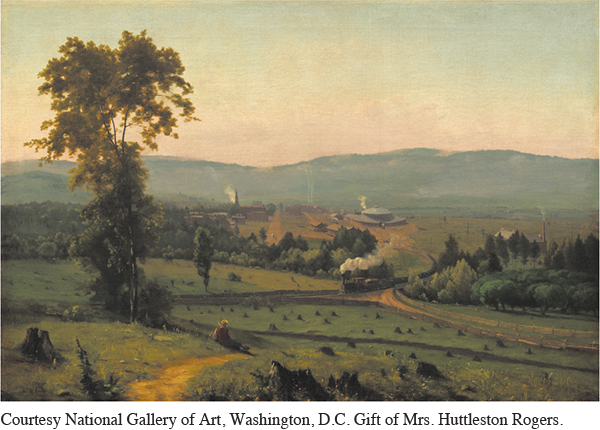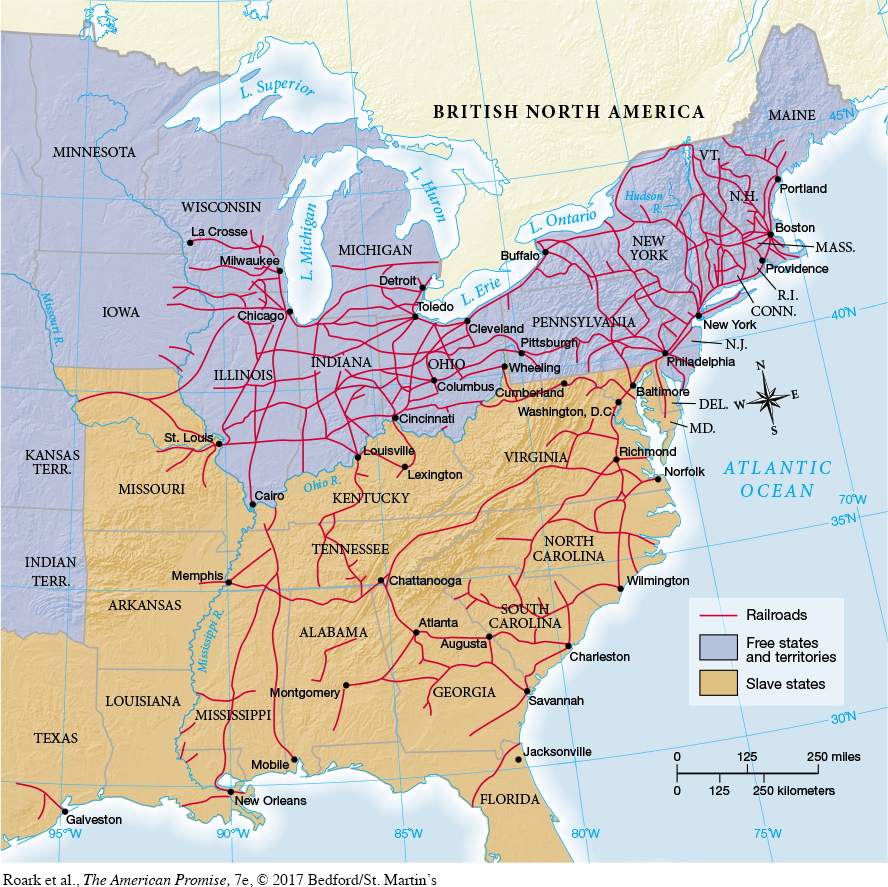The American Promise: Printed Page 319
The American Promise, Value Edition: Printed Page 293
The American Promise: A Concise History: Printed Page 332
Railroads: Breaking the Bonds of Nature
Railroads captured Americans’ imagination because they seemed to break the bonds of nature. When canals and rivers froze in winter or became impassable during summer droughts, trains steamed ahead, averaging more than twenty miles an hour during the 1850s. Above all, railroads gave cities not blessed with canals or navigable rivers a way to compete for rural trade.
In 1850, trains steamed along 9,000 miles of track, almost two-


In addition to speeding transportation, railroads propelled the growth of other industries, such as iron and communications. Iron production grew five times faster than the population during the decades up to 1860, in part to meet railroads’ demand. Railroads also stimulated the fledgling telegraph industry. In 1844, Samuel F. B. Morse demonstrated the potential of his telegraph by transmitting an electronic message between Washington, D.C., and Baltimore. By 1861, more than fifty thousand miles of telegraph wire stretched across the continent to the Pacific Ocean, often alongside railroad tracks, accelerating communications of all sorts.
In contrast to government ownership of railroads common in other industrial nations, private corporations built and owned almost all American railroads. But the railroads received massive government aid, especially federal land grants. Up to 1850, the federal government had granted a total of seven million acres of federal land to various turnpike, highway, and canal projects. In 1850, Congress approved a precedent-
The American Promise: Printed Page 319
The American Promise, Value Edition: Printed Page 293
The American Promise: A Concise History: Printed Page 332
Page 320The railroad boom of the 1850s signaled the growing industrial might of the American economy. Like other industries, railroads succeeded because they served both farms and cities. But transportation was not revolutionized overnight. Most Americans in 1860 were still far more familiar with horses than with locomotives. Even by 1875, trains carried only about a third of the mail; most of the rest still went by horseback or stagecoach.
The economy of the 1840s and 1850s linked an expanding, westward-
REVIEW Why did the United States become a leading industrial power in the nineteenth century?